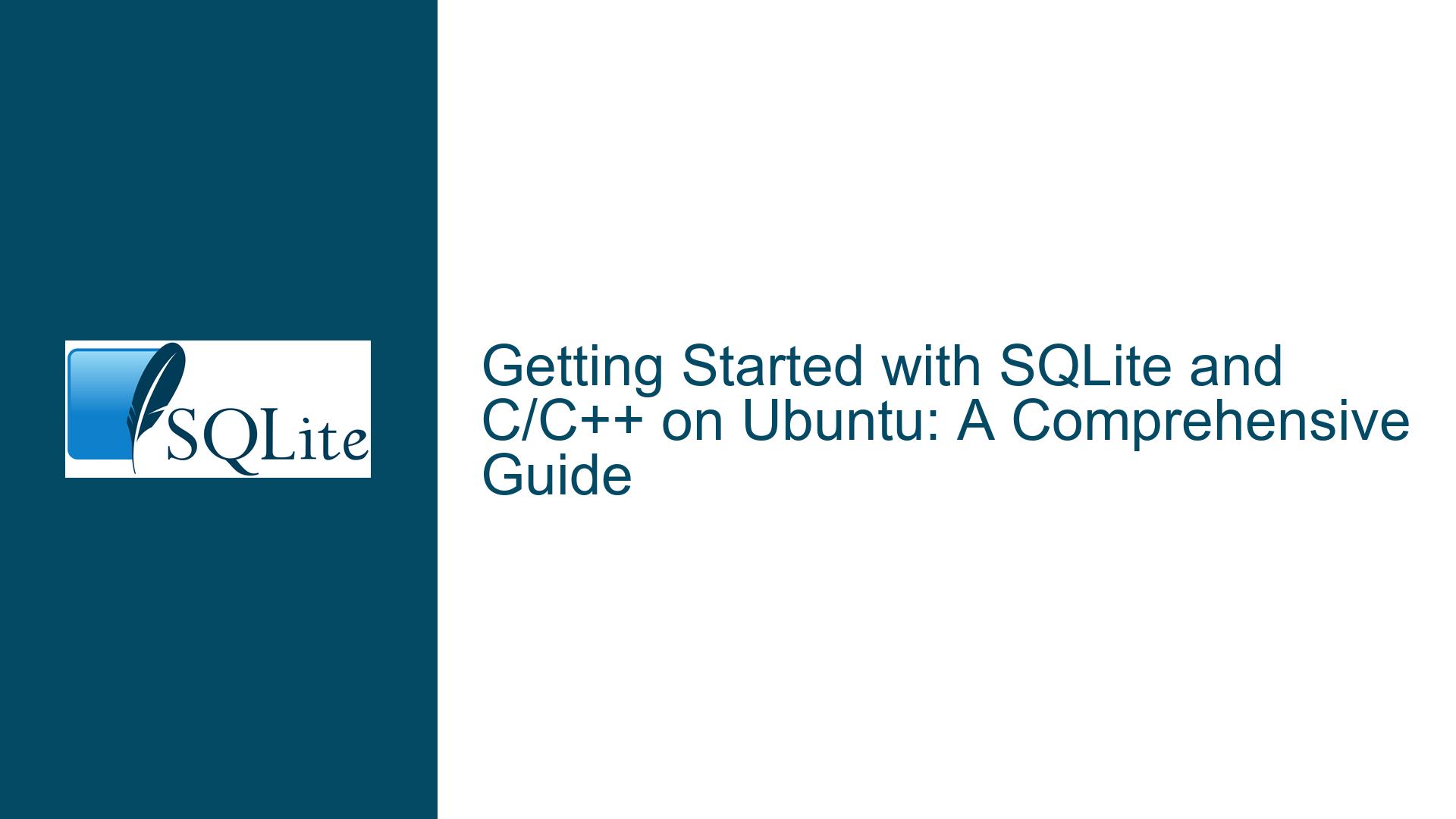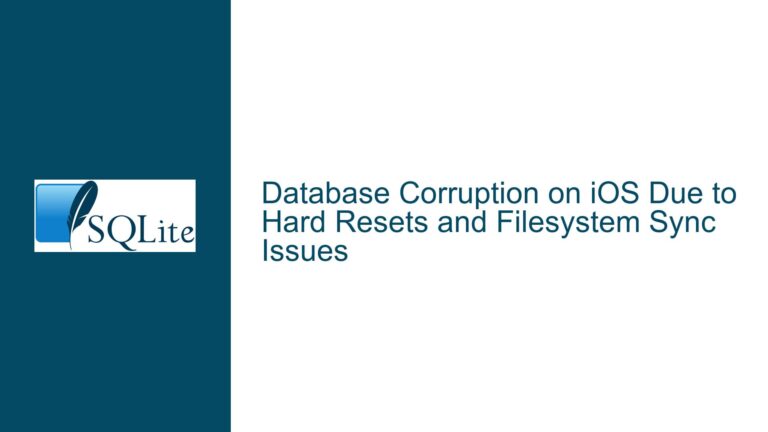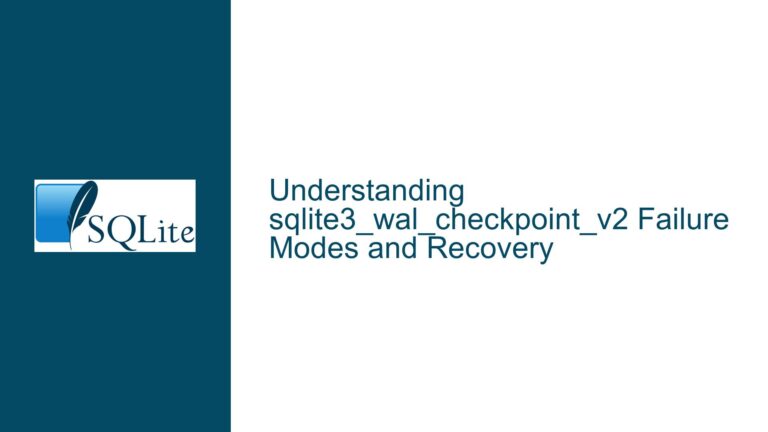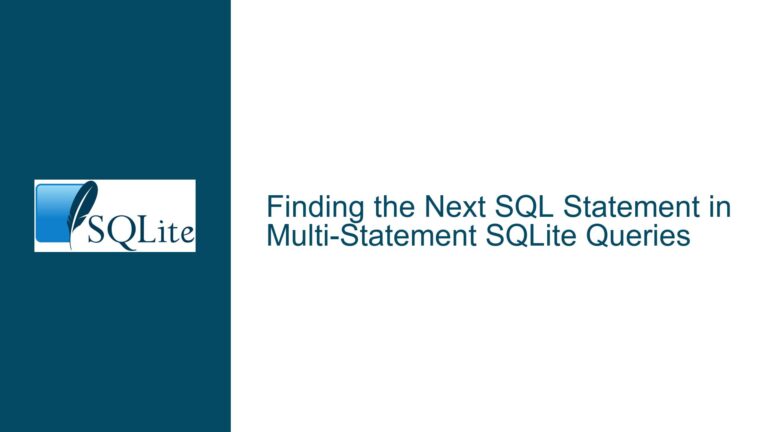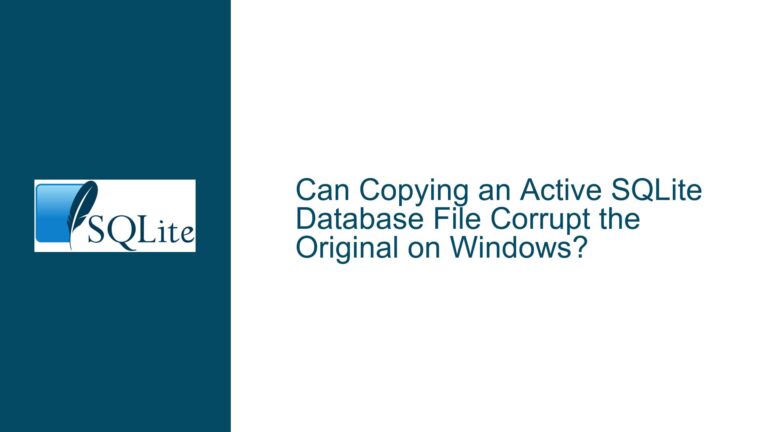Getting Started with SQLite and C/C++ on Ubuntu: A Comprehensive Guide
Setting Up a C/C++ Development Environment for SQLite on Ubuntu
When embarking on the journey of learning C/C++ programming with a focus on SQLite, the first step is to set up a robust development environment. This involves choosing the right tools, understanding the build process, and familiarizing yourself with the necessary libraries and utilities. Ubuntu 20.04, being a popular Linux distribution, provides a stable platform for this purpose. However, the initial setup can be daunting, especially for those transitioning from a more guided environment like C++ Builder on Windows.
The primary tools you will need are a compiler (gcc), a build automation tool (make), and a text editor (vim). While Integrated Development Environments (IDEs) like NetBeans can simplify the process, starting with basic tools can provide a deeper understanding of the underlying mechanisms. This approach is particularly beneficial when working with SQLite, as it allows you to grasp the intricacies of compiling and linking SQLite with your C/C++ programs.
To begin, ensure that gcc is installed on your system. You can verify this by running gcc --version in the terminal. If it is not installed, you can install it using the command sudo apt-get install build-essential. This package includes gcc, make, and other essential tools for compiling C/C++ programs.
Next, you will need to download the SQLite amalgamation source code. The amalgamation is a single C file (sqlite3.c) and a header file (sqlite3.h) that contain the entire SQLite library. This simplifies the compilation process, as you only need to include these two files in your project. You can download the latest snapshot from the SQLite website or use the command wget https://sqlite.org/snapshot/sqlite-snapshot-202011231450.tar.gz to get a specific version.
Once you have the SQLite source code, you can create a simple makefile to automate the compilation process. A makefile is a script that defines how to compile and link your program. Here is an example of a basic makefile for a C program that uses SQLite:
CC = gcc
CFLAGS = -Wall -g
LDFLAGS = -lpthread -ldl
all: my_program
my_program: my_program.c sqlite3.c
$(CC) $(CFLAGS) -o my_program my_program.c sqlite3.c $(LDFLAGS)
clean:
rm -f my_program
In this makefile, CC specifies the compiler, CFLAGS sets the compiler flags, and LDFLAGS specifies the libraries to link against. The all target is the default target that will be built when you run make. The clean target is used to remove the compiled program.
To compile your program, navigate to the directory containing the makefile and run make. This will compile my_program.c and sqlite3.c into an executable named my_program. If you need to recompile, simply run make clean followed by make.
Understanding the SQLite Amalgamation and Compilation Process
The SQLite amalgamation is a unique feature that simplifies the integration of SQLite into your C/C++ projects. By providing a single C file (sqlite3.c) and a header file (sqlite3.h), the amalgamation eliminates the need to manage multiple source files and complex build configurations. This is particularly advantageous for beginners, as it reduces the complexity of the compilation process.
The amalgamation is created by combining all the individual source files of SQLite into one. This process is automated and performed by the SQLite development team. The result is a highly optimized and self-contained library that can be easily included in your projects. The sqlite3.c file contains the entire SQLite library, including the core database engine, the SQL parser, and various utility functions. The sqlite3.h file provides the necessary function prototypes and macros for interacting with the library.
When compiling a program that uses SQLite, you need to include sqlite3.c in your compilation command. This ensures that the SQLite library is compiled and linked with your program. The sqlite3.h file should be included in your source code using the #include directive. Here is an example of a simple C program that uses SQLite:
#include <stdio.h>
#include <sqlite3.h>
int main() {
sqlite3 *db;
int rc;
rc = sqlite3_open("test.db", &db);
if (rc) {
fprintf(stderr, "Can't open database: %s\n", sqlite3_errmsg(db));
return 1;
} else {
fprintf(stdout, "Opened database successfully\n");
}
sqlite3_close(db);
return 0;
}
In this program, the sqlite3_open function is used to open a SQLite database file named test.db. If the database does not exist, it will be created. The sqlite3_errmsg function is used to retrieve an error message if the database cannot be opened. Finally, the sqlite3_close function is used to close the database connection.
To compile this program, you can use the following command:
gcc -o my_program my_program.c sqlite3.c -lpthread -ldl
This command compiles my_program.c and sqlite3.c into an executable named my_program. The -lpthread and -ldl flags are used to link against the pthread and dl libraries, which are required by SQLite.
Debugging Common Issues in SQLite C/C++ Projects
When working with SQLite in C/C++ projects, you may encounter various issues related to compilation, linking, and runtime errors. Understanding how to debug these issues is crucial for successful development. Below are some common problems and their solutions.
Issue: Undefined Reference to SQLite Functions
One of the most common issues when compiling a C/C++ program that uses SQLite is the "undefined reference" error. This error occurs when the linker cannot find the implementation of the SQLite functions. This usually happens when sqlite3.c is not included in the compilation command.
Solution: Ensure that sqlite3.c is included in the compilation command. For example, if you are compiling a program named my_program.c, use the following command:
gcc -o my_program my_program.c sqlite3.c -lpthread -ldl
Issue: Database File Not Found or Cannot Be Opened
Another common issue is the inability to open or create a SQLite database file. This can happen if the file path is incorrect, or if the program does not have the necessary permissions to access the file.
Solution: Verify that the file path is correct and that the program has the necessary permissions to read and write to the file. You can also use the sqlite3_errmsg function to retrieve a detailed error message. For example:
rc = sqlite3_open("test.db", &db);
if (rc) {
fprintf(stderr, "Can't open database: %s\n", sqlite3_errmsg(db));
return 1;
}
Issue: Thread Safety and Concurrent Access
SQLite is designed to be thread-safe, but certain configurations and usage patterns can lead to issues when multiple threads access the same database concurrently. This can result in errors such as "database is locked" or "attempt to write a readonly database."
Solution: Ensure that SQLite is compiled with thread safety enabled. This is typically the default, but you can verify it by checking the SQLITE_THREADSAFE compile-time option. Additionally, use proper synchronization mechanisms such as mutexes to control access to the database connection.
Issue: Memory Leaks and Resource Management
Improper management of SQLite resources, such as database connections and prepared statements, can lead to memory leaks and other resource-related issues. This is particularly important in long-running applications.
Solution: Always close database connections and finalize prepared statements when they are no longer needed. Use tools like Valgrind to detect memory leaks and other resource management issues. For example:
sqlite3 *db;
sqlite3_stmt *stmt;
// Open database and prepare statement
sqlite3_open("test.db", &db);
sqlite3_prepare_v2(db, "SELECT * FROM my_table", -1, &stmt, NULL);
// Execute statement and process results
while (sqlite3_step(stmt) == SQLITE_ROW) {
// Process row
}
// Finalize statement and close database
sqlite3_finalize(stmt);
sqlite3_close(db);
Issue: Performance Bottlenecks
SQLite is known for its performance and efficiency, but certain operations, such as large transactions or complex queries, can lead to performance bottlenecks. This is especially true when dealing with large datasets or high-concurrency environments.
Solution: Optimize your SQL queries and use transactions to group multiple operations into a single atomic unit. Use the EXPLAIN command to analyze query performance and identify potential bottlenecks. Additionally, consider using indexes to speed up query execution.
Issue: Database Corruption
Database corruption can occur due to various reasons, such as power failures, hardware issues, or software bugs. This can lead to data loss and other serious issues.
Solution: Use the PRAGMA journal_mode command to enable write-ahead logging (WAL) or other journaling modes that provide better protection against corruption. Regularly back up your database to prevent data loss. You can use the sqlite3_backup API to create backups programmatically.
sqlite3 *db;
sqlite3_backup *pBackup;
// Open source and destination databases
sqlite3_open("source.db", &db);
sqlite3_open("backup.db", &pBackup);
// Initialize backup process
pBackup = sqlite3_backup_init(pBackup, "main", db, "main");
if (pBackup) {
// Perform backup
sqlite3_backup_step(pBackup, -1);
sqlite3_backup_finish(pBackup);
}
// Close databases
sqlite3_close(db);
sqlite3_close(pBackup);
Issue: Cross-Platform Compatibility
When developing applications that use SQLite, you may need to ensure compatibility across different platforms, such as Linux, Windows, and macOS. This can introduce challenges related to file paths, library dependencies, and compiler differences.
Solution: Use cross-platform libraries and tools, such as CMake, to manage your build process. Ensure that your code is portable by using platform-independent APIs and avoiding platform-specific features. Test your application on all target platforms to identify and resolve compatibility issues.
Issue: Security Vulnerabilities
SQLite is generally secure, but improper usage can introduce vulnerabilities, such as SQL injection or unauthorized access to the database file.
Solution: Use parameterized queries to prevent SQL injection attacks. Ensure that the database file is stored in a secure location with appropriate file permissions. Consider using encryption to protect sensitive data.
sqlite3_stmt *stmt;
const char *sql = "INSERT INTO my_table (column1, column2) VALUES (?, ?)";
// Prepare statement
sqlite3_prepare_v2(db, sql, -1, &stmt, NULL);
// Bind parameters
sqlite3_bind_text(stmt, 1, "value1", -1, SQLITE_STATIC);
sqlite3_bind_int(stmt, 2, 123);
// Execute statement
sqlite3_step(stmt);
// Finalize statement
sqlite3_finalize(stmt);
Issue: Upgrading SQLite
As SQLite evolves, new features and improvements are introduced. Upgrading to a newer version of SQLite can provide performance benefits and access to new functionality. However, upgrading can also introduce compatibility issues, especially if your application relies on deprecated features or behaviors.
Solution: Before upgrading, review the SQLite changelog and release notes to identify any changes that may affect your application. Test your application with the new version of SQLite in a controlled environment before deploying it to production. If necessary, update your code to accommodate any changes in the SQLite API or behavior.
Issue: Debugging Complex Queries
Complex SQL queries can be difficult to debug, especially when they involve multiple joins, subqueries, or advanced features like window functions. Errors in these queries can lead to incorrect results or performance issues.
Solution: Break down complex queries into smaller, more manageable parts. Use the EXPLAIN command to analyze the query execution plan and identify potential issues. Consider using a graphical tool, such as SQLite Browser, to visualize the query results and execution plan.
Issue: Handling Large Datasets
SQLite is capable of handling large datasets, but performance can degrade as the dataset size increases. This is especially true for operations that require full table scans or large joins.
Solution: Optimize your database schema and queries to handle large datasets efficiently. Use indexes to speed up query execution, and consider partitioning your data into multiple tables or databases. Use the VACUUM command to optimize the database file and reclaim unused space.
Issue: Integrating SQLite with Other Libraries
When developing applications that use SQLite, you may need to integrate it with other libraries or frameworks, such as GUI toolkits or web servers. This can introduce challenges related to library dependencies, threading, and resource management.
Solution: Use well-established libraries and frameworks that provide built-in support for SQLite. Ensure that your application is designed to handle the specific requirements of each library, such as threading models or event loops. Test your application thoroughly to identify and resolve any integration issues.
Issue: Managing Database Schema Changes
As your application evolves, you may need to make changes to the database schema, such as adding new tables, columns, or indexes. Managing these changes can be challenging, especially in a production environment.
Solution: Use a schema migration tool or framework to manage database schema changes. This allows you to version control your schema and apply changes in a controlled and repeatable manner. Consider using a tool like SQLite Migrations or Alembic to automate the migration process.
Issue: Handling Transactions and Concurrency
SQLite supports transactions and concurrent access, but improper usage can lead to issues such as deadlocks or data corruption. This is especially true in high-concurrency environments or when using advanced features like savepoints.
Solution: Use transactions to group multiple operations into a single atomic unit. Ensure that your application handles transaction rollbacks and retries gracefully. Use the BEGIN IMMEDIATE or BEGIN EXCLUSIVE commands to avoid deadlocks in high-concurrency environments.
Issue: Optimizing SQLite for Embedded Systems
SQLite is often used in embedded systems, where resources such as memory and storage are limited. Optimizing SQLite for these environments can be challenging, especially when dealing with large datasets or complex queries.
Solution: Use the SQLITE_OMIT compile-time options to disable unnecessary features and reduce the size of the SQLite library. Optimize your database schema and queries to minimize resource usage. Consider using a custom VFS (Virtual File System) to optimize file I/O operations.
Issue: Using SQLite with ORMs
Object-Relational Mapping (ORM) frameworks can simplify the process of interacting with SQLite, but they can also introduce performance overhead and complexity. This is especially true when dealing with complex queries or large datasets.
Solution: Choose an ORM that is well-suited to your application’s requirements and performance constraints. Use the ORM’s query optimization features to minimize performance overhead. Consider using raw SQL queries for complex operations that are difficult to express using the ORM’s API.
Issue: Handling Binary Data
SQLite supports the storage of binary data using the BLOB data type. However, handling binary data can introduce challenges related to performance, storage, and data integrity.
Solution: Use the BLOB data type to store binary data efficiently. Consider using compression or encoding techniques to reduce the size of binary data. Use the sqlite3_bind_blob and sqlite3_column_blob functions to handle binary data in your C/C++ code.
Issue: Debugging Memory Issues
Memory issues, such as leaks, corruption, or excessive usage, can be difficult to debug in C/C++ programs that use SQLite. These issues can lead to crashes, performance degradation, or data corruption.
Solution: Use tools like Valgrind or AddressSanitizer to detect memory issues in your application. Ensure that all SQLite resources, such as database connections and prepared statements, are properly managed and released. Use the sqlite3_memory_used and sqlite3_memory_highwater functions to monitor memory usage.
Issue: Handling Errors and Exceptions
SQLite provides detailed error codes and messages to help diagnose issues. However, handling errors and exceptions in C/C++ programs can be challenging, especially when dealing with complex error conditions or nested transactions.
Solution: Use the sqlite3_errcode and sqlite3_errmsg functions to retrieve detailed error information. Implement robust error handling and recovery mechanisms in your application. Consider using exceptions or error codes to propagate errors through your codebase.
Issue: Using SQLite with Multithreaded Applications
SQLite is thread-safe, but using it in multithreaded applications can introduce challenges related to concurrency, resource management, and performance.
Solution: Use the SQLITE_CONFIG_MULTITHREAD or SQLITE_CONFIG_SERIALIZED modes to configure SQLite for multithreaded use. Ensure that database connections and prepared statements are not shared between threads without proper synchronization. Use thread-local storage or connection pooling to manage database connections in a multithreaded environment.
Issue: Optimizing SQLite for Read-Only Applications
In some applications, the database is primarily read-only, with few or no write operations. Optimizing SQLite for these use cases can improve performance and reduce resource usage.
Solution: Use the PRAGMA journal_mode=OFF command to disable the journal file in read-only applications. Consider using the SQLITE_OPEN_READONLY flag when opening the database to prevent accidental writes. Use the VACUUM command to optimize the database file for read-only access.
Issue: Using SQLite with Networked Applications
SQLite is designed for local storage and is not suitable for use as a networked database server. However, it can be used in networked applications as a local cache or embedded database.
Solution: Use SQLite as a local cache or embedded database in networked applications. Consider using a client-server database system, such as PostgreSQL or MySQL, for centralized data storage. Use replication or synchronization techniques to keep the local SQLite database in sync with the central database.
Issue: Handling Large Transactions
Large transactions, such as bulk inserts or updates, can lead to performance issues or database corruption if not handled properly. This is especially true when dealing with large datasets or high-concurrency environments.
Solution: Use the BEGIN IMMEDIATE or BEGIN EXCLUSIVE commands
